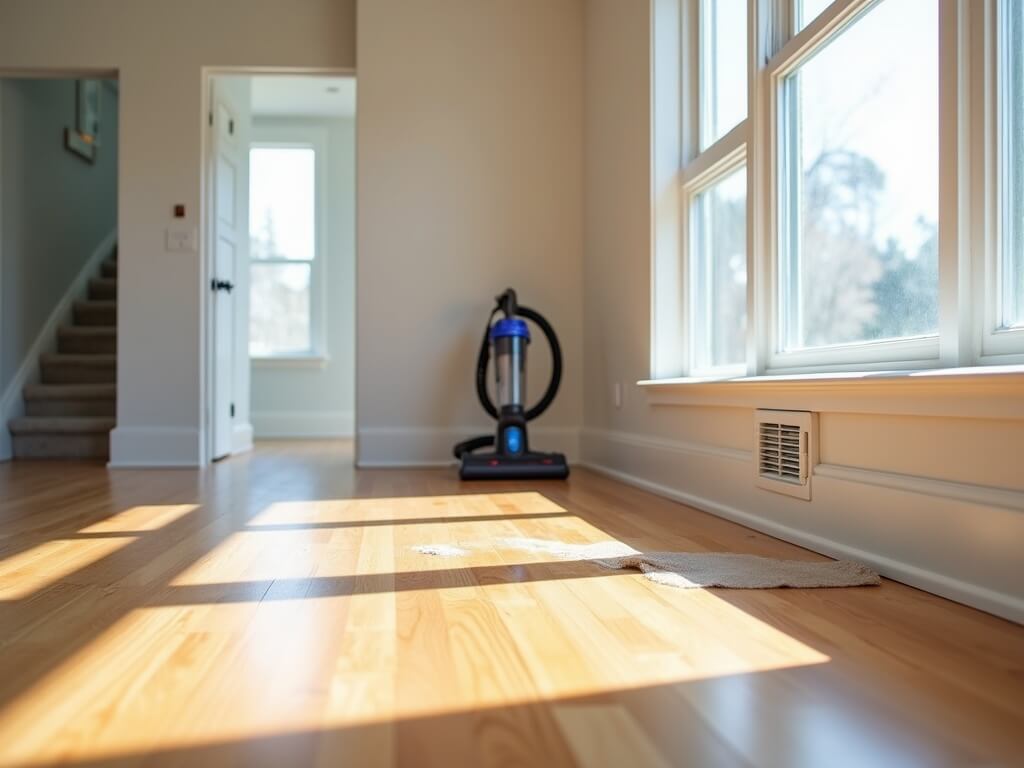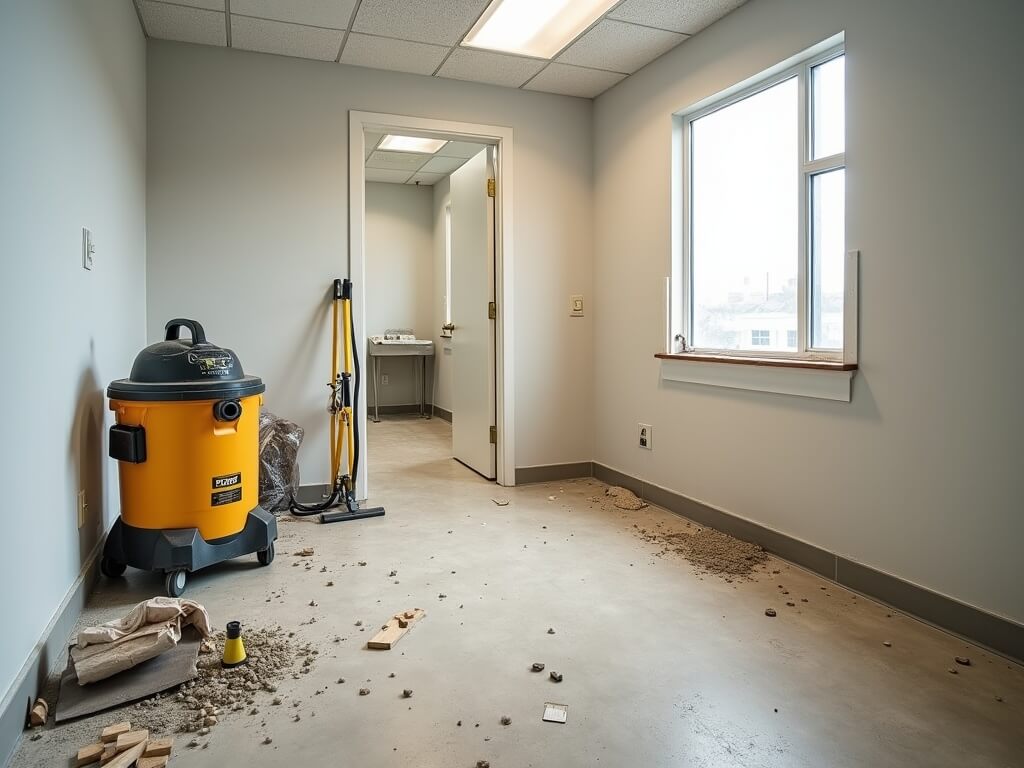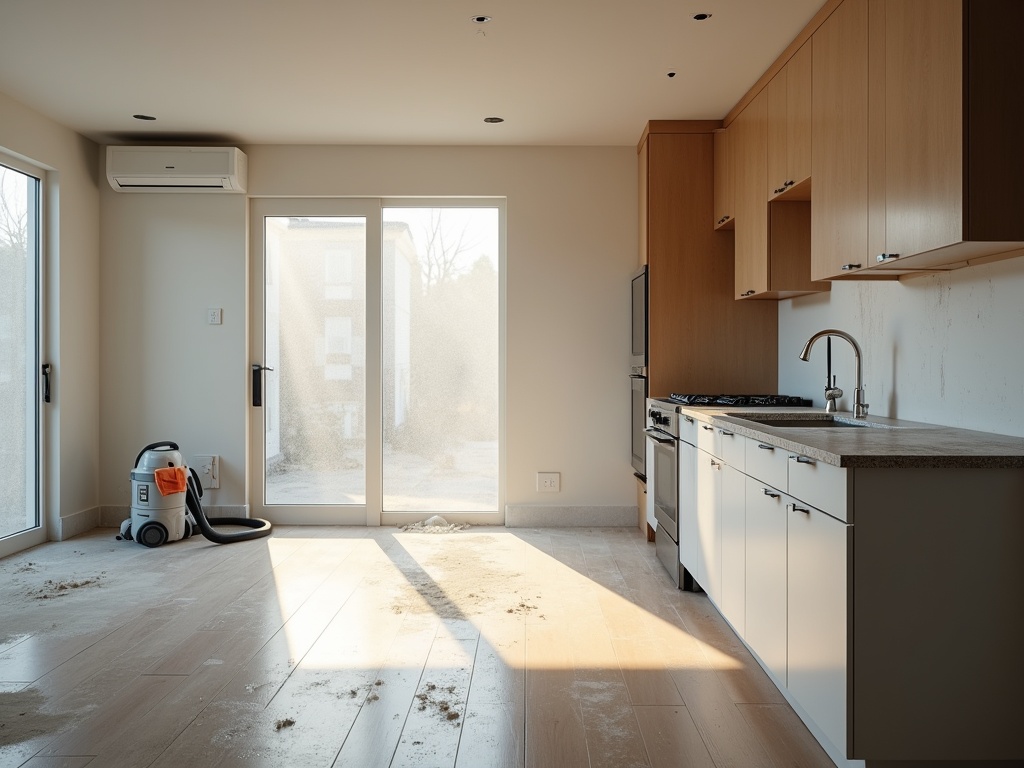Is your new build or renovation finally done—but it feels like a dust storm hit your home or business?
You’re not alone.
Post-construction cleaning in Auburn, WA isn’t just about wiping surfaces. It’s about digging deep to remove drywall dust in air vents, debris behind appliances, and paint splatter no one bothered to catch.
If your space still smells like sawdust and looks like a work zone, it’s not done yet.
That’s where professional post-construction cleaning steps in—and trust me, it’s one of the smartest final steps you can take.
Let me show you why.

It’s not regular house cleaning. This is a serious clean designed to remove construction dust, sharp debris, and leftover grime from every nook and surface.
Every space—residential or commercial—needs to be safe and move-in ready, and that’s where this process becomes a game changer.
In Auburn, WA, I’ve cleaned everything from new custom homes to remodeled doctor’s offices. I’ve seen firsthand what can happen when debris is ignored: dust choking HVAC units, screws lodged in carpets, paint splatters baked onto windows.
Skipping cleanup isn’t just lazy—it can be dangerous.
If you’re a homeowner, contractor, or property manager trying to prep for occupancy or inspection, post-construction cleaning is your final quality control step.
Key takeaway: This is the last and most crucial phase of your building or renovation process.
Let me break that down. Here’s who we regularly help with post-construction cleaning around King County:
Whether it's a single-room update or an entire retail buildout, the scope changes—but the need for dust and debris removal never does.
Want to know the biggest mistake I see people make?
They try to DIY it.
Then they call us anyway when the dust keeps returning and someone gets a splinter from leftover wood scraps behind a cabinet.
Cleaning after construction is a whole different animal. It’s labor-heavy and detail-obsessed work.
The truth? A broom and some Windex won’t cut it.
Here’s how we structure every job—from drywall-heavy remodels to brand-new buildings:
We often bring ladders, scrapers, and even shop vacs for the bigger messes.
Think of this as a midpoint reset—especially helpful on large job sites where workmanship continues.
If it’s visible—and sometimes even when it’s not—we clean it.
I once spent 45 minutes just removing drywall residue from the interior cabinet edges of a brand-new home. The owners thought it was scuffing—they didn’t realize it was dust sealed into the protective plastic from weeks before.
Key takeaway: Proper post-construction cleaning follows a sequence. Miss a step? You’ll end up paying for it later.

Dust doesn’t just land on your counters. It travels.
Construction dust is much finer than normal household dust. It settles in:
We use microfiber cloths that actually grab particles—not just push them around—and HEPA-filter vacuums to trap dust before it re-circulates into the air.
Pro tip: If your cleaner isn’t using a HEPA vacuum, you’ll keep seeing that same white haze on furniture and electronics, weeks later.
Debris? That’s another beast.
We find everything from carpet tack strips poking up in corners, to nails embedded in floor vents, to chunks of grout forgotten behind toilets.
This isn’t the kind of stuff you want around kids, pets, or employees.
Key takeaway: Dust is invisible danger. Debris is visible risk. Both need expert removal.
Post-construction cleaning isn’t just expensive house cleaning.
At $80/hour, services like ours in Auburn offer equipment, trained cleaners, and a checklist detailed enough to pass final inspections.
Want to customize scope? You can. We often tailor jobs specifically for medical offices, retail spaces, and multi-tenant buildings: https://www.sierrastoptobottomcleaning.com/services/commercial-cleaning
That’s key in Auburn, where properties mix old construction with brand-new systems.
Summary: You’re not just paying for time—you’re paying for peace of mind, safety, and the ability to actually use your space once the builders are gone.
Coming up next, I’ll show you exactly how local factors in Auburn, WA affect your cleaning needs—and why going with an expert familiar with regional codes, weather patterns, and dust profiles can save you time, hassle, and money.
Learn more about our deep cleaning services and how we keep your space spotless after construction projects: https://www.sierrastoptobottomcleaning.com/services/deep-cleaning
Let’s get specific.
Auburn isn’t downtown Seattle.
We have active construction zones flanked by older buildings, lots of mixed-use development, variable access to dump sites—and a unique climate that affects how long dust lingers.
Why does that matter?
Because if your post-construction cleaning crew doesn’t know the Auburn/Kent/Federal Way corridor, you risk:
I once had a client call us after another company “finished” cleaning a new townhome near Lake Tapps. The crew didn’t realize the home had ductless mini-splits instead of traditional HVAC ducts.
Guess what?
They missed internal filters choked with plaster dust. The new owner turned on the system—boom, white film everywhere within 30 minutes.
What you need is local expertise.
Someone who knows that King County requires specific guidelines on construction waste. That Auburn has mix-zoned neighborhoods where retail floors and residential kitchens need different sanitization standards.
Key takeaway: Local knowledge isn’t fluff—it’s functional. In post-construction cleaning Auburn WA, it often spells the difference between a clean build and a costly redo.

Let’s get real.
Post-construction cleaning isn’t only about what’s visible—it’s a health and safety requirement.
As professionals, here’s how we minimize risk while maximizing results:
We use:
And we clean areas most people forget:
I personally walked a job once in a converted Auburn commercial space where the contractor thought everything was ready. He was getting ready for a realtor’s photo shoot.
One problem—no one had cleaned the second-floor HVAC vent diffusers.
A single swipe with my microfiber cloth turned it gray.
Guess what the realtor said? “If it’s that dusty up there, I don’t want to know what’s in the ductwork.”
Needless to say, we did a full airflow clean that night.
Key takeaway: Clients don’t forget poor cleaning—and neither do inspectors. Especially not in commercial handoffs.

We get these every week. Here’s the truth, plain and simple:
You can try. But unless you have commercial cleaners, ladders, HEPA vacuums, and four hours of upper-body strength to wipe beams 10 feet high, be prepared for repeat cleanings and missed spots.
Most homeowners underestimate just how fine post-construction dust is—and how many passes it takes to truly remove it.
Every job is different.
And yes—it’s $80/hour. But with that, you’re getting insured, safety-conscious work with compliance built in.
Nope.
Not unless they bring:
Key takeaway: Think of this like hiring an electrician instead of changing the lightbulb yourself. Right tool, right task.
Still trying to decide if this is “worth it”?
Here’s how it breaks down:
Say you’ve remodeled your kitchen and living area. It’s about 1,000 sq. ft, and there’s paint overspray, drywall dust, masking tape adhesive, and tile grout bits left over.
Cleaning this properly will take two cleaners about 10–12 hours.
That’s $1,600 to $1,920 for:
Plus the peace of mind that your contractor punch list will actually clear on inspection.
Key takeaway: You’re not just buying cleaning—you’re buying speed, safety, comfort, and a smooth transition into your new space.
We’re not just vacuuming and wiping anymore.
Here’s what we see on the horizon—and how that impacts your next building project:
Think checklists with progress photos, digitally signed for accountability.
More clients now request eco-safe products, zero-VOC cleaners, and recyclable disposal methods.
We’re already using:
Especially in high-allergen situations (like schools, dental offices, daycares). We’re keeping an eye on portable filtration units that remove leftover particulates before you ever move in.
Key takeaway: Clients want safe, sustainable, smart cleaning—and modern pros adapt, fast.
Let me wrap with this:
In construction, your last step often leaves the first impression.
Whether you’re handing off keys to a homeowner, prepping a space for tenants, or moving your own family into a long-awaited rebuild—post-construction cleaning seals the deal.
It’s about trust, finish quality, and safety.
And in places like Auburn, WA, where each job comes with its own regulatory challenges and construction character, you want professionals who don’t just clean—but understand exactly what your property needs.
If you’ve just wrapped a build and you’re still seeing dust? It’s time.
Give us a call at 253-449-6100 or email sierrastoptobottomcleaning@gmail.com and ask for a customized post-construction cleaning quote.
Because in Auburn, clean isn’t clean—unless it’s from the top to bottom.
